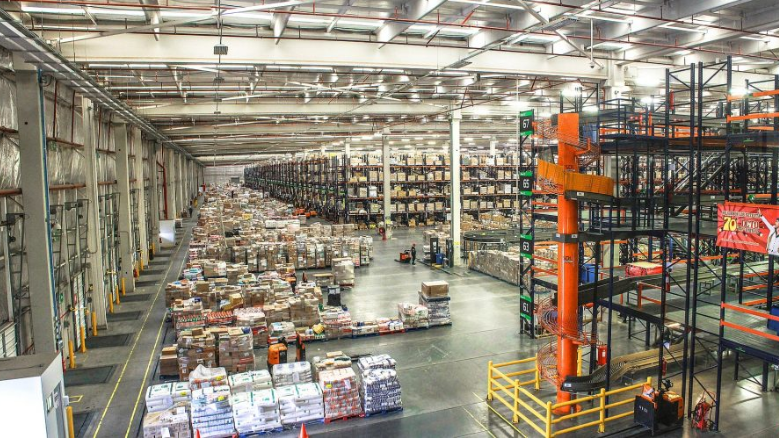Trade distortion and protectionism
Donald Trump's tariffs backfire on business and farmers
Published 08 May 2019 | 6 minute read
Donald Trump's tariffs have brought unintended consequences that will not be easily undone. They are also complicating business decisions and causing long-term damage to soybean farmers.
Last year saw a dramatic uptick in actual or contemplated tariff actions, and that trend shows no signs of abating in 2019, as the trade war drags on. The typical pattern has been a unilateral application of tariffs by the US, promptly followed by retaliatory tariffs put in place by impacted trade partners.
The successive rounds of tit-for-tat tariffs between the US and China, which began last July, have attracted the most attention, but they were proceeded by section 232 tariffs on steel and aluminum in March which broadsided several of the US’ largest trading partners and key strategic allies. Meanwhile, the White House continues to weigh the possibility of applying global automotive tariffs, as discussions on possible trade agreements with Japan and the EU – two major auto exporting economies – are expected to commence shortly.
The stated US rationale for these tariffs has been to elicit policy changes to address perceived unfair trade practices on the part of trade partners, or more broadly in the belief that tariffs can reduce bilateral trade surpluses maintained by these partners. The section 232 tariffs on steel and aluminum were nominally taken on national security grounds, but the US President himself has implied that the real rationale was to reduce the US trade deficit or gain negotiating leverage, and most analysts find the national security arguments to be specious.
Tariffs bring unintended consequences not easily undone
The presumption on the part of the US Administration seems to be that tariffs provide an effective cudgel to redress wrongdoing on the part of trade partners. It would be a grave misnomer however to view these tariffs as surgical strikes which can be deployed with little or no collateral damage, and then just as easily retracted once trade partners acquiesce. In reality, tariffs are extremely blunt instruments with widespread ripple impacts and enduring consequences which cannot simply be “switched on and switched off”. And the resulting business disruptions and market distortions often inflict direct and indirect damages which outweigh any gains that might be achieved even under the best of circumstances.
Setting aside the legitimate grievances the US might have on the unfair trade practices which triggered the tariffs – and there is ample reason to believe that many of the US’ complaints have merit – consider the real-world way in which recent tariff actions are playing out.
Broadly speaking, tariffs impose costs on US consumers and businesses that want to — or need to – purchase imported products, components, or commodities. This obviously reduces real income in the US. In fact, the New York Federal Reserve Bank estimates that the trade war tariffs are reducing US real income by $1.4 billion a month.
Soybean farmers feel the pain
These numbers don’t even begin to tell the full story, however. Consider the plight of US soybean farmers. The US applied an initial tranche of 25% tariffs on $50 billion worth of Chinese imports last July in response to various complaints about China IPR and technology policies. China predictably launched its own retaliatory tariffs on a basket of US products, including soybeans, shortly thereafter. The inclusion of soybeans was tactically predictable. US soybeans farmers shipped over 24 million metric tons of soybeans to China the previous year, making it by far the most important export market for US farmers, and therefore a high profile target for China to hit.
The impact of the tariffs has been severe. US soybean exports to China were brought to a virtual halt, dropping over 90 percent and costing farmers roughly $7.9 billion in lost sales. But the tariff story has multiple levels. Selling less soybeans to China meant that US farmers would also have to bear the additional cost of placing more of their crops into storage facilities. The price tag associated with storage however has now gone up, thanks to the previous tariffs placed on the steel and aluminum products required in the construction of storage facilities. In fact, the cost of steel used in grain storage bins has risen 20 percent. Adding further insult to injury, these same steel tariffs are also raising the price of a wide range of farm equipment and machinery.
It’s a bit mind-boggling to reflect on the vicious cycle: Chinese tariffs – put in place in response to US tariffs – are substantially reducing US soybean sales and requiring greater storage capacity — the price of which has now gone up thanks to a previous and unrelated round of tariffs. Perhaps not surprisingly, farm bankruptcies in the US Midwest are at record levels.
It might be tempting to view this as a temporary problem, given the expectation that the US and China will soon arrive at an agreement which will allow the soybean tariffs to be removed. Unfortunately, that’s not the case.
When punitive tariffs are removed, things don’t necessarily revert back to the status quo
We know from past experience that when punitive tariffs are removed, things don’t necessarily revert back to the previous status quo. New supplier relationships have been established, and are often quite satisfactory. New trade patterns have been formed as a result of the tariffs, disruptions have already been absorbed, and restoring the previous patterns would entail an additional round of costly disruptions that companies are not keen to absorb.
In short, companies and consumers adjust to not having access to the tariffed product and develop alternatives or work-around solutions. When these punitive tariffs are removed, a certain portion of the previously existing market is frequently lost forever. In the case of US soybean exports to China, it will take years for sales to revert to the pre-tariff levels – if it happens at all. Indeed, the US Department of Agriculture estimates that pre-trade war levels of soybean exports will not be restored before 2026-27, as alternative suppliers, especially from Brazil, have rushed in to fill the void in China’s market.
As a side note, it’s questionable if this can even be viewed as “good news” from Brazil’s point of view. Environmentalists warn that the sudden market opportunity in China has resulted in a breakneck rush to clear more land for soybean production in Brazil, which is leading to damaging deforestation in the Amazon Basin.
The bottom line? Irrespective of any benefits from a potential trade agreement with China, large segments of the US agricultural sector will be worse off than where they started – and they will remain behind for years to come. These same dynamics are playing out in various sectors across the US economy.
Tariff regimes create bureaucratic hurdles for business
Tariff impacts such as these are direct and highly visible. But the application of global or targeted tariffs also bring additional costs which are less obvious.
Developing and administering a sharply differentiated trade regime (as the US is now doing), which includes steep tariffs in certain sectors with wide variance amongst trade partners and narrow product categories, means that government agencies are required to render judgments which can have profound consequences for companies. Yet through their own admission, the relevant agencies don’t always have the capacity or expertise to make the right calls, leading to costly distortions and frustrating inconsistencies.
For example, the almost immediate impact of the steel and aluminum tariffs implemented by the US last March was to create a flood of company requests for exemptions or modifications. More than 51,000 requests for exemptions have been received to date, and complaints about the complexity of the application process and the reasoning and transparency of the decisions have been widespread.
One of the less glamorous benefits of our seven decade effort to reduce tariffs has been to provide business with a more simplified and predictable tariff regime to navigate, and to progressively diminish bureaucratic discretion. This has yielded benefits to companies and consumers alike. We’re now heading in the opposite direction. The costs associated with a more convoluted tariff regime might be more difficult to quantify than lost sales or added expenses, but they are no less real.
The US Administration has correctly diagnosed a number of serious maladies afflicting both its bilateral trade relationships as well as the functioning of the global trade system. Given the seeming inability of the traditional mechanisms to provide redress, it should perhaps not be surprising that the US has resorted to the imposition of unilateral tariffs. But any hoped for benefits should be carefully weighed against the deep and hard-to-reverse damage these tariffs will also inflict.
© The Hinrich Foundation. See our website Terms and conditions for our copyright and reprint policy. All statements of fact and the views, conclusions and recommendations expressed in this publication are the sole responsibility of the author(s).




